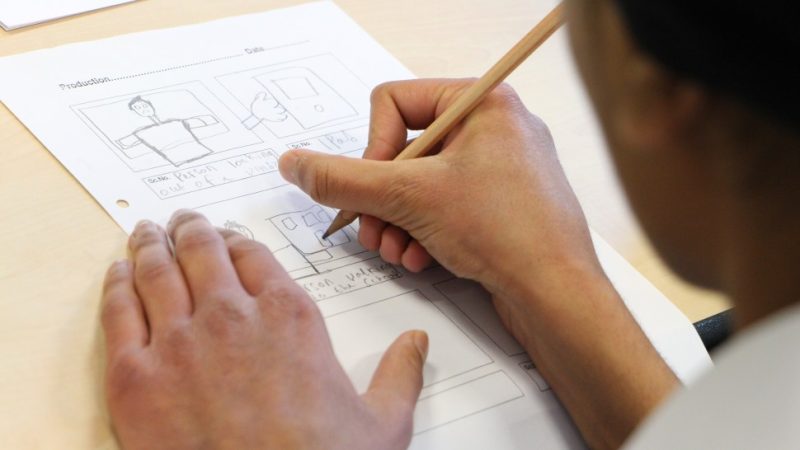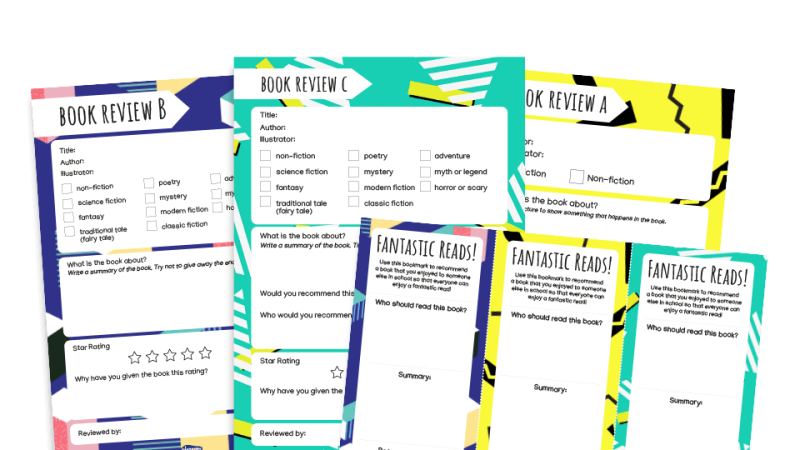Prepping a Book for your Class can Unlock many Benefits for you and the Children

Prepping a book for your class can unlock many benefits for you and the children, says Stephen Lockyer…

Imagine being in a restaurant where, as soon as you’ve sat down, the waiter simply places the food in front of you – no browsing the menu, no ordering, no flair. Sounds fairly disappointing doesn’t it? And yet we sometimes do exactly this with reading choices in school.
Ponder this question: how did you introduce the last fiction book you read or studied with your class? Was it a surprise to them, or did you warm them up first? ‘Prepping’ a book is a technique of introducing a text so that by the time you start reading the first few lines, the children are all bought into it completely.
Reading doyenne Marie Clay talks about ‘debugging a book’, in other words, taking all the challenges and obstacles which might stand in the way of the children enjoying it; prepping takes this a stage further – and here’s how to do it:
1 | Read it yourself
It is incredible to hear that some teachers don’t read a new book completely before selecting it for their class. This is a must, as it can provide a real sense of continuity, pace and insight into the themes. If you are part of a year group where your reading list is given to you, take time to read the books before even considering teaching them. It sounds obvious, but you need to be more than one page ahead, especially for fiction.
As you read each book, jot down any ideas that come to mind for activities inspired by the text. Note down the broad themes, as well as any names, places or unfamiliar words with which your children might struggle – these will be introduced later.
It might also be worthwhile creating a family tree as you read. These can prove invaluable in explaining relationships and dynamics, and can support the children in their understanding of the book.
2 | Find a prep object
If an image speaks a thousand words, then an object can project a thousand images. Seek out, beg, borrow or steal an item or items which can encapsulate a story. It might be something of significance later in the narrative, or something we discover early on that a key character has with them or discovers. Charity and antique shops, boot sales, social media sites and above all, teachers’ lofts are all great places to look for prop objects.
Leave the item or objects in the classroom – perhaps in the middle of the floor between desks – and don’t refer to them at all if you can; this raises the intrigue! You may choose to leave something on your table, and act surprised about its appearance. If you have a suitable container, you could even put it in a flowerpot, box, envelope or old suitcase – this often has the most impact.
3 | The clutch
This part of the introduction is carried out before you read a single word to the children, and ideally after their interest has been piqued by the ‘prep object’. Put the book in a large, sealed envelope, have pupils sit down and tell them that you have found the best story, which you are desperate to share with them. Clutch the envelope like it can’t even be prised from your fingers, and reel off some of the book’s ‘teaser’ features. Carry on with this until the class starts begging to find out what the book is – they will!
4 | Vocabulary preparation
With your notes, identify perhaps ten key words to introduce to the children. You’ll want to find out if they know what they mean, if they can use or define them, and even if they have no idea at all what they are! Vocabulary prep can be done with words which don’t even feature in the book, too, but might be relevant for children to use in their writing and discussions. Introduce these in the same way.
Have these key words up on the board as much as you can – the more exposure the children have to wide vocabulary, the richer their writing will be. If they are on permanent display, rather than shared temporarily via a screen, you will find the words start to permeate into other subjects too. And if they are used incorrectly, it gives you a brilliant opportunity to correct them with a small vocabulary teaching session.
5 | The extract
The value of using extracts cannot be overestimated. This also requires some preparation, but pays dividends in terms of getting the children ready for understanding the writing style, characters, and theme of a book.
Find three or four suitable extracts – one or two paragraphs at most each – and print these out on slips of paper. Keep these in the book envelope, and before you read a single word of the main story, give out the slips and ask the children to be ‘detextives’. The aim is for them to try to come to as many conclusions as they can about the title they are about to share from the extracts alone. Is it a descriptive book? When is it set? Where is it set? What happens? What do we know already about the characters?
6 | Working wall
Find a spare board and back it, with a colour picture of the book in the centre. Encourage the children to fill this wall with their thoughts and ideas about it. They could create family trees, fiction maps, character sheets, extracts they like, best lines, fake film posters of the story, even Amazon reviews. Encouraging them each to bring “something for the working wall” will quickly fill it as well as inspiring others.












